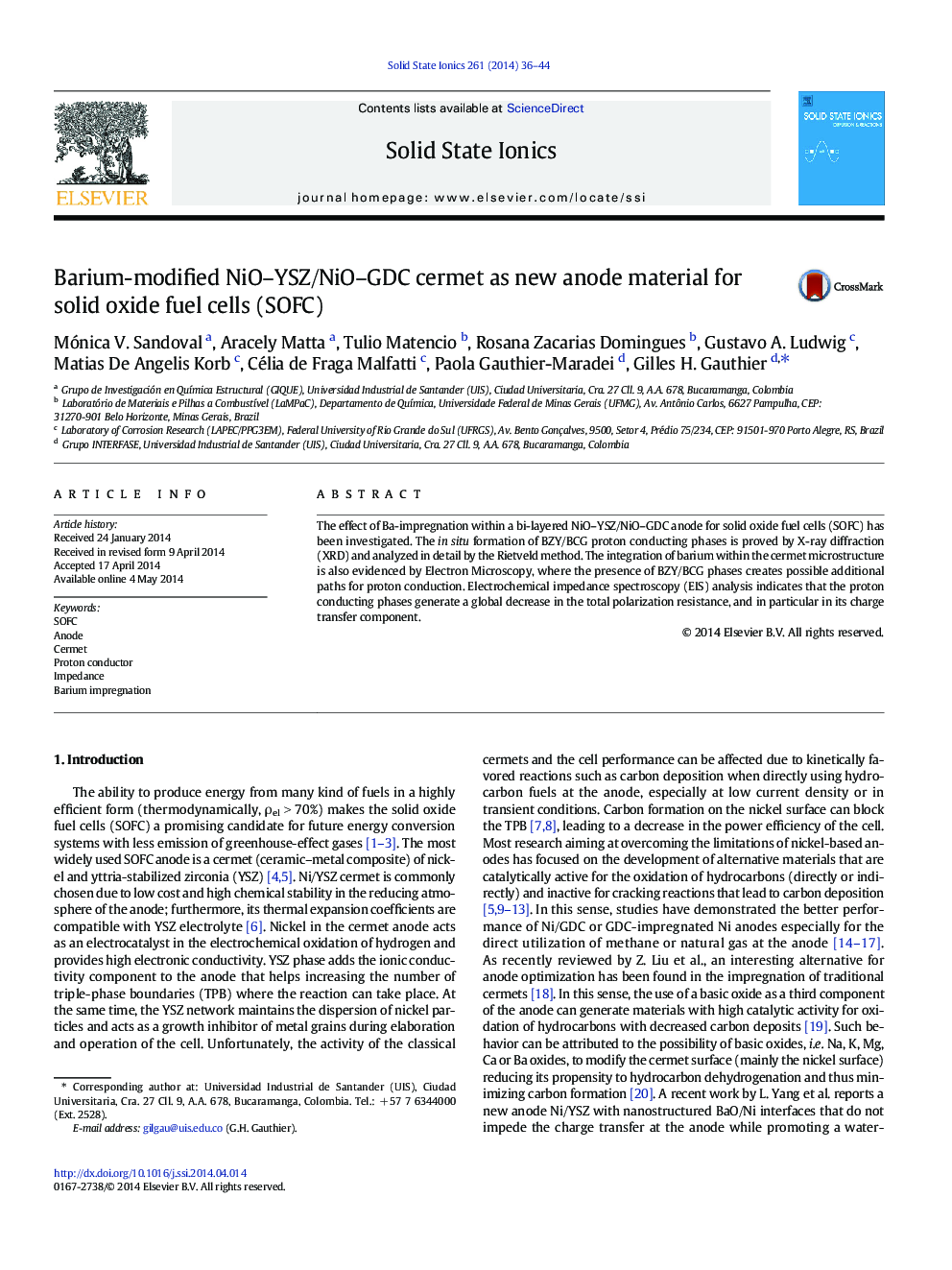| Article ID | Journal | Published Year | Pages | File Type |
|---|---|---|---|---|
| 1295860 | Solid State Ionics | 2014 | 9 Pages |
•BCG/BZY are formed in situ by Ba-impregnation within a bilayer NiO–GDC/NiO–YSZ anode.•The presence of proton conducting phases at the TPB decreases the global Rp.•A hypothesis describing the improvement of the anodic charge-transfer is proposed.
The effect of Ba-impregnation within a bi-layered NiO–YSZ/NiO–GDC anode for solid oxide fuel cells (SOFC) has been investigated. The in situ formation of BZY/BCG proton conducting phases is proved by X-ray diffraction (XRD) and analyzed in detail by the Rietveld method. The integration of barium within the cermet microstructure is also evidenced by Electron Microscopy, where the presence of BZY/BCG phases creates possible additional paths for proton conduction. Electrochemical impedance spectroscopy (EIS) analysis indicates that the proton conducting phases generate a global decrease in the total polarization resistance, and in particular in its charge transfer component.
